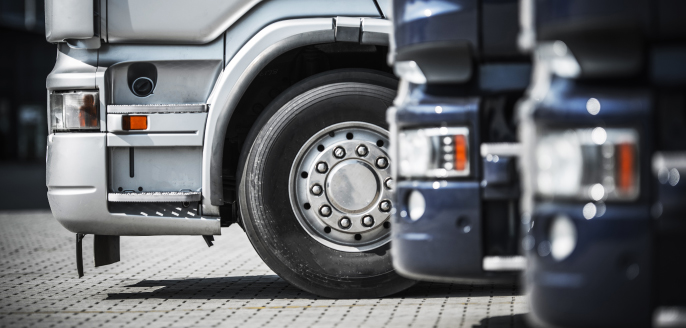
Retreading 101
Here’s what you should know before you select tires for your fleet
Retreading is an important part of a commercial tire’s life cycle, so it’s also crucial to consider retreading when determining which tires are best for your fleet.
There are two main reasons why retreading is so important. First, it extends the useful life of a tire, lowering its overall cost per mile, which helps fleet operators control their costs.
Second, retreading tires keeps them on the road – and out of landfills – longer.
But not all retreading is the same. There are two main processes – mold cure and pre-cure – and understanding the differences will help you make more informed purchase decisions.
Retreading Basics
On a basic level, both retreading processes involve applying a new tread to the tire casing, which has had the old tread removed and has been buffed down so the new tread will adhere properly.
Both processes also involve using uncured rubber to adhere the new tread to the casing. That uncured rubber then has to be cured through the application of heat, time and pressure. If the curing is not done correctly, the tread could separate from the casing and the tire would fail.
The differences between the two processes lie in how much uncured rubber is used, and how it is ultimately cured.
Pre-Cure Retreading
The first retreading process, and likely the most common and most preferred, is known as pre-cure retreading.
In this process, the old tread is removed from the tire, and the casing is buffed down and measured to ensure it’s round, true, and meets industry-standard dimensions. Then, a layer of cushion gum – or uncured rubber – is added to the tire as an adhesive. Then, a layer of pre-cured rubber, already molded into a tread, is applied over the cushion gum.
The tire then goes through the curing process, and is essentially “cooked” through the application of heat and pressure.
The resulting bond between the casing and the tread is stronger than any other rubber in the tire.
Mold Cure Retreading
The second type of retreading, called mold cure, starts the same way as pre-cure, with the old tread being removed and the tire casing buffed and measured.
Then, instead of applying cushion gum and a pre-cured tread, multiple layers of uncured rubber are applied to the casing. This new rubber is rolled on, like duct tape, until the desired thickness is achieved.
The tire is then pressed into a mold to create the tread pattern, then cured under heat and pressure.
The key difference is in the amount of uncured rubber. Mold cure retreading uses a lot more uncured rubber than pre-cure. For that reason, the tire needs to be cured for longer, and at a higher temperature, than in the pre-cure process.
This process can be hard on the original casing, which is cured rubber that is essentially being “re-cured.” If the process is not done right, it can affect the integrity and dimensional consistency of the tire.
This is especially a problem with low-quality tires, which can come out of the mold cure retreading process looking dry and cracked, despite being relatively new tires. That can also lead to premature failures.
Warranty
When purchasing tires for your fleet, you want to do so with the retreading process in mind. While the pre-cure process is preferable, a well-made tire should come out of the mold cure process in good shape, provided it’s done correctly.
To protect your fleet from problems that may occur in the retreading process, look for tires from manufacturers who stand behind their products. Armstrong commercial tires are manufactured to the best industry standards, and are backed up with a seven-year warranty. The casings are guaranteed through two retreading processes to be free from defects in workmanship and materials.
For more such updates, please visit www.armstrongtire.com.